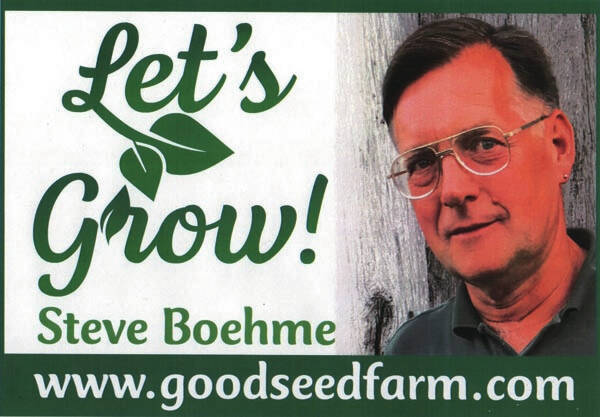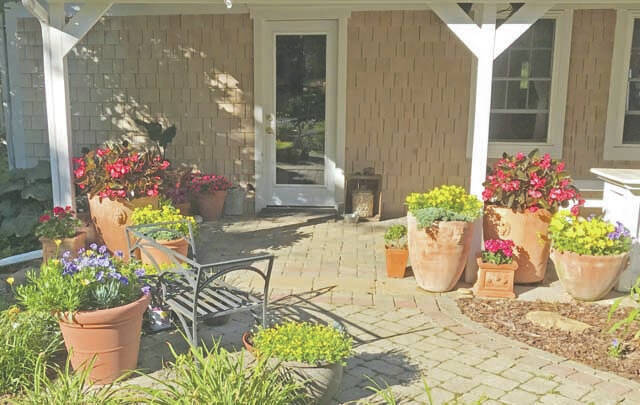Most home gardeners agree that perennials are less trouble than annual bedding plants, because “they come back every year so you don’t have to plant them again and again”. We agree with this sentiment, however very few perennials provide all-season color, so the best flower gardens have both annuals and perennials.
Marjorie does most of the home gardening at our house, and over the years she has settled into a really good routine that combines annuals and perennials, for a stunning display from early spring through hard frost. Her secret is to fill our garden beds with a variety of shrubs and perennials that bloom at different times, and plant all her annuals in planter pots. Most of these containers are on our porch and patio, but there are many more pots scattered around the gardens.
Gardening in containers has numerous advantages over planting in garden beds. First and foremost, there’s never any weeding. We mulch the shrub and perennial beds early in the season with three inches of pine bark, before the weeds get a toehold. The planter pots are filled with bagged potting mix, which is sterile so there are no weeds at all in the containers. Ever. Insects and diseases are minimal.
Control over soil quality is the biggest advantage to container gardening. Potting soil is fluffier than any garden soil, so it breathes and drains perfectly. Plants breathe through their roots, so they thrive in container mixes and often struggle in heavy, compacted garden soil. This is a key point. Filling planter pots with garden dirt or “topsoil” defeats the purpose. Heavy soils don’t breathe, don’t drain, and restrict root growth. They always contain weed seeds. They also expand when frozen, which destroys the container.
It’s expensive to change out all the containers with fresh potting soil each year. Marjorie just replaces the top six inches in each pot, whenever she changes out the plants. Bagged potting soils vary in quality. Marjorie likes Jolly Gardener ProLine C/L Grower Mix, and Sungro Professional Potting Mix. Professional growers generally favor ProMix BX, but that’s harder to find in garden centers. Definitely NOT recommended is Miracle Gro Potting Soil, but it’s still vastly better than almost any garden dirt you might have in your yard.
Marjorie mixes a handful of Espoma Plant Tone with the container mix as she tucks in each plant. Later in the season she’ll boost the plants with a liquid fertilizer. She likes Espoma “Bloom” the best, but Miracle Gro works fine too. Containers require frequent watering, so Marjorie has hoses and watering cans strategically placed to make this task easy and quick. It’s a good idea to use “pot feet” or some other kind of support to elevate the planters so they can drain easily. She likes the “Down Under Plant Stand”, an inexpensive poly device that’s easy to adjust to different size pots.
Marjorie starts each year by filling half of her planter pots with colorful cold-hardy pansies. Throughout the spring, as the weather warms, she’ll fill the rest of her pots with other colorful annuals. By mid-June the pansies start to wither from the heat, so she’ll change them out for summer annuals. Some of the soil comes out when she uproots the pansies, so she replaces it with fresh potting mix and Plant Tone.
There’s a lot more to container gardening than we could fit into this week’s column. Watch this space during the coming weeks for more detailed information and tips on container gardening!
Steve Boehme is a landscape designer/installer specializing in landscape “makeovers”. “Let’s Grow” is published weekly; column archives are online at www.goodseedfarm.com. For more information call GoodSeed Farm Landscapes at (937) 587-7021.






